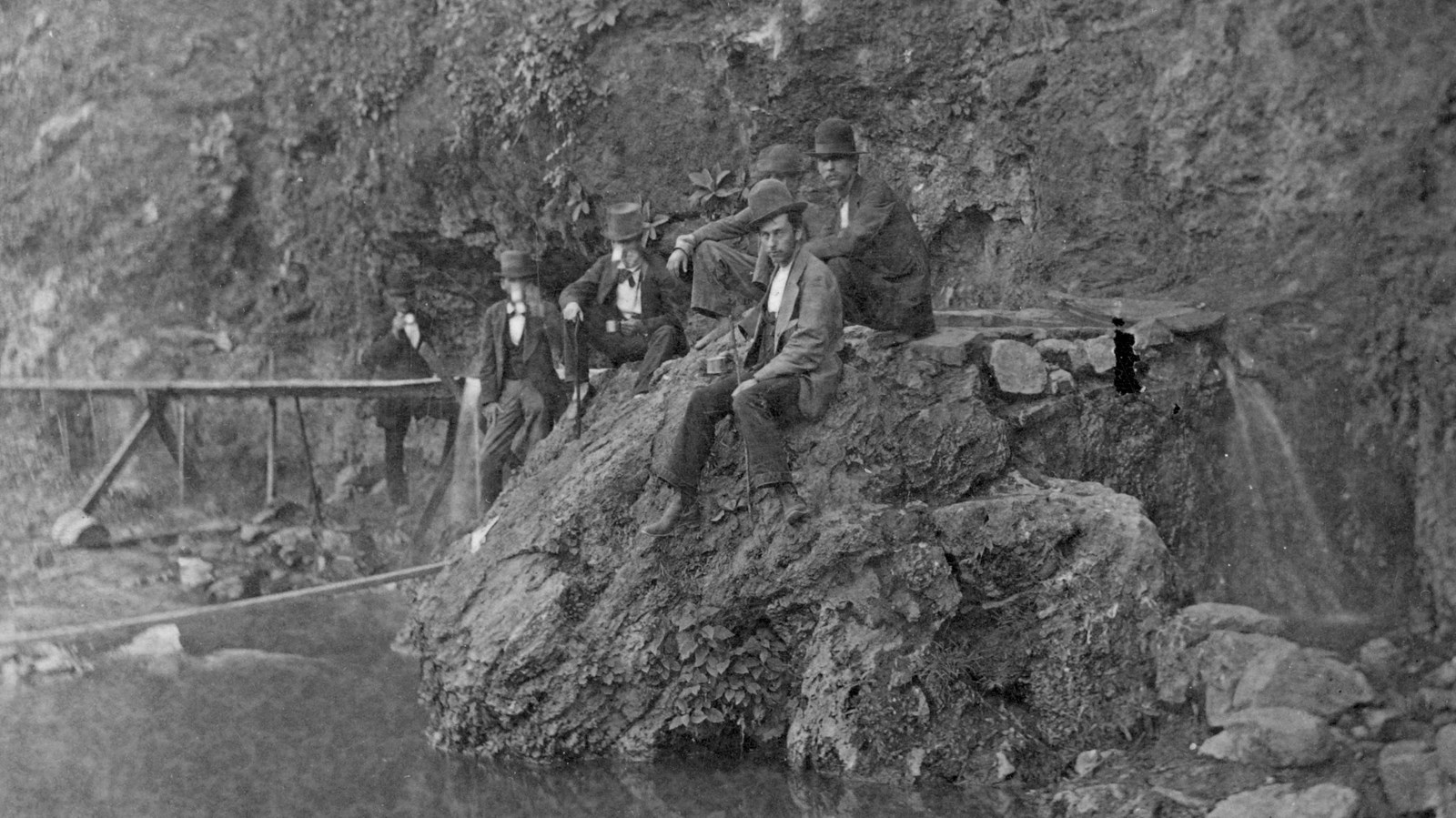Last updated: December 15, 2022
Place
Big Iron Spring

NPS/Archives
Quick Facts
Location:
Hot Springs, Arkansas
Significance:
Big Iron is one of the largest and hottest springs in the park and was the site of significant bathhouse development in the 19th century.
The Big Iron Spring is located near the base of Hot Springs Mountain. Historical photos show the spring as a tall mound of tufa rising next to the stream bed, situated under a bluff of exposed rock.
In a 1901 survey the water emerged at 147 degrees, the hottest in that year’s survey, and flowed out at 140 gal/minute.
By all accounts, the spring was large in several ways. One observer described the mouth of the spring as “a vein nearly as large as the body of a man.” Big Iron Spring produced 250,000 gallons, approximately one-third, of the more than 700,000 gallons of daily water.
The spring was named for the brownish, rust-colored deposits that the thermal waters created on the tufa outcrop. There was a small amount of Iron found in the water, but not a concentration significantly different from other springs in the park.
The Big Iron name could be found throughout nineteenth century Hot Springs. In the 1870s, a developer built a bathhouse adjacent to the spring and named the establishment Big Iron Bath House. Big Iron spring water was piped into the bathhouse. The waters of the Big Iron were one of the most popular springs for drinking water.
Bathhouse developers used dynamite to blast away large portions of tufa rock in the 1880s. The blasting altered the flow of the thermal water, causing the spring to temporarily dry up.
By 1901, Big Iron Spring was no longer visible. Due to development, it was covered in 5 feet of soil.
Today, the water of Big Iron Spring contributes significantly the overall average temperature of Hot Springs' thermal water of 143 degrees Fahrenheit.
In a 1901 survey the water emerged at 147 degrees, the hottest in that year’s survey, and flowed out at 140 gal/minute.
By all accounts, the spring was large in several ways. One observer described the mouth of the spring as “a vein nearly as large as the body of a man.” Big Iron Spring produced 250,000 gallons, approximately one-third, of the more than 700,000 gallons of daily water.
The spring was named for the brownish, rust-colored deposits that the thermal waters created on the tufa outcrop. There was a small amount of Iron found in the water, but not a concentration significantly different from other springs in the park.
The Big Iron name could be found throughout nineteenth century Hot Springs. In the 1870s, a developer built a bathhouse adjacent to the spring and named the establishment Big Iron Bath House. Big Iron spring water was piped into the bathhouse. The waters of the Big Iron were one of the most popular springs for drinking water.
Bathhouse developers used dynamite to blast away large portions of tufa rock in the 1880s. The blasting altered the flow of the thermal water, causing the spring to temporarily dry up.
By 1901, Big Iron Spring was no longer visible. Due to development, it was covered in 5 feet of soil.
Today, the water of Big Iron Spring contributes significantly the overall average temperature of Hot Springs' thermal water of 143 degrees Fahrenheit.
